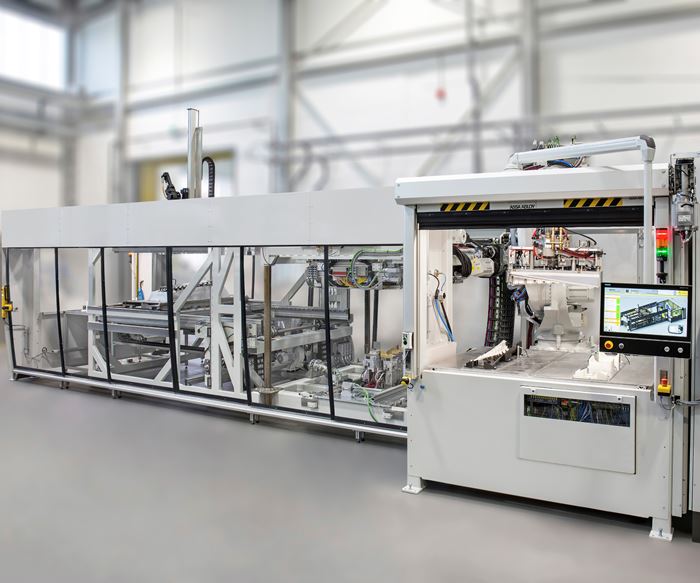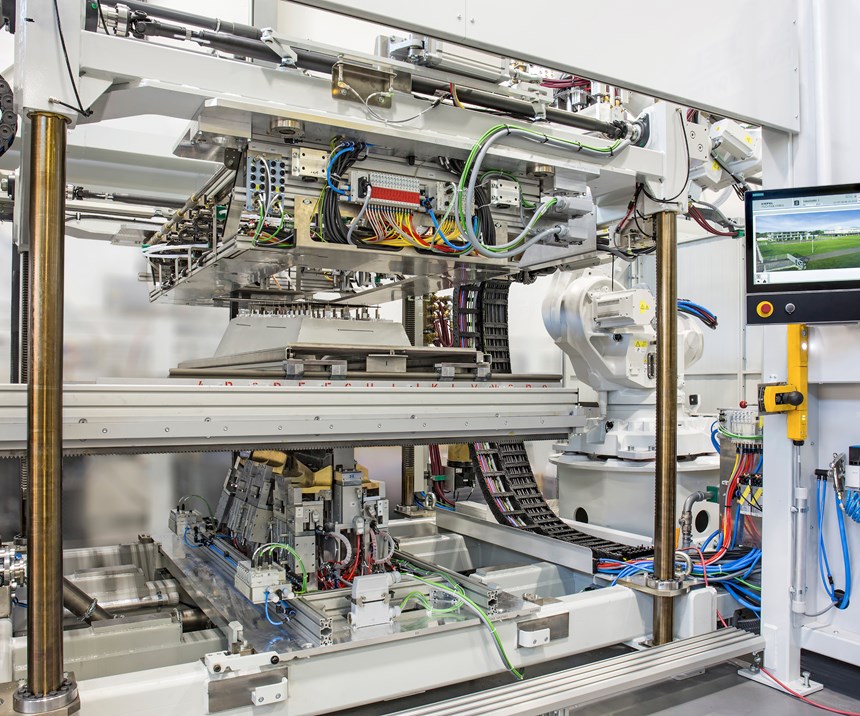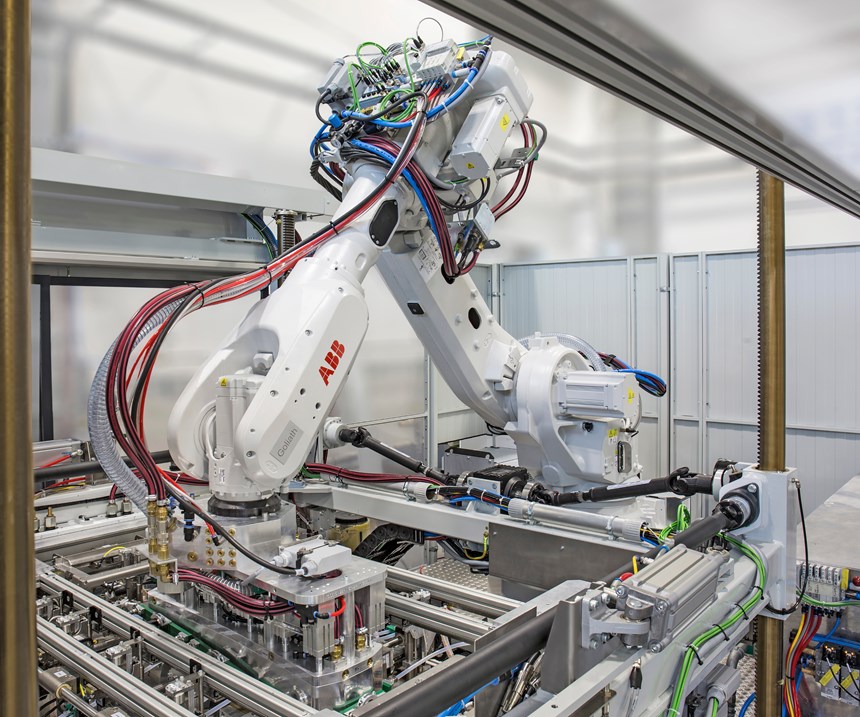Decorating/Finishing: New Automotive Decorative Laminating Technology Cuts Costs, Boosts Quality
Describing it as a “revolution in vacuum lamination,” Kiefel GmbH in Germany has launched Tailored Blank Lamination (TBL) technology for automotive interior components such as door and instrument panels, consoles, storage compartments, pillars, etc.
Describing it as a “revolution in vacuum lamination,” Kiefel GmbH in Germany has launched Tailored Blank Lamination (TBL) technology for automotive interior components such as door and instrument panels, consoles, storage compartments, pillars, etc. Unlike the usual roll-to-roll lamination process, the key feature of TBL is feeding precision-precut film blanks from a stack into the vacuum laminating press to apply decorative soft-touch surfaces to injection molded substrates. A robot integrated into the vacuum-laminating station picks up the injection molded substrates. A carrier frame with multiple servo-driven grippers that can move freely in three dimensions, positions the film blank on the substrate without stretching. After laminating, the robot transfers the component to the next station, such as edge-folding or punching. (Cutting knives integrated into the TBL tool reportedly produce exact film overlap length for subsequent edge-folding.)
Compared with conventional vacuum lamination, Kiefel says TBL can save up to 40% in film consumption, while also reducing film stretch and grain washout (film draw-off) by 25-30% to a range of 10-15%, with uninterrupted soft touch. The process is also highly automated, reducing labor costs, and the new TBL machine system occupies a footprint 50% smaller than conventional vacuum-laminating systems. TBL is also said to be capable of handling undercuts and sharp corners and flanges. TBL is applicable to both vacuum and press lamination.
Related Content
-
Automation in Thermoforming on the Rise
Equipment suppliers’ latest innovations exemplify this trend driven by factors such as labor shortages, higher-speed thermoformers and tighter quality control.
-
Compact Entry Rotating-Rack Series of Weather Testers Expanded
Atlas’ Xenotest now also available to meet American standards.
-
Polyfuze Graphics Corp. Partners With RFID Specialists
To help customers navigate the complexities of RFID technology, Polyfuze has partnered with such companies as HID Global.








